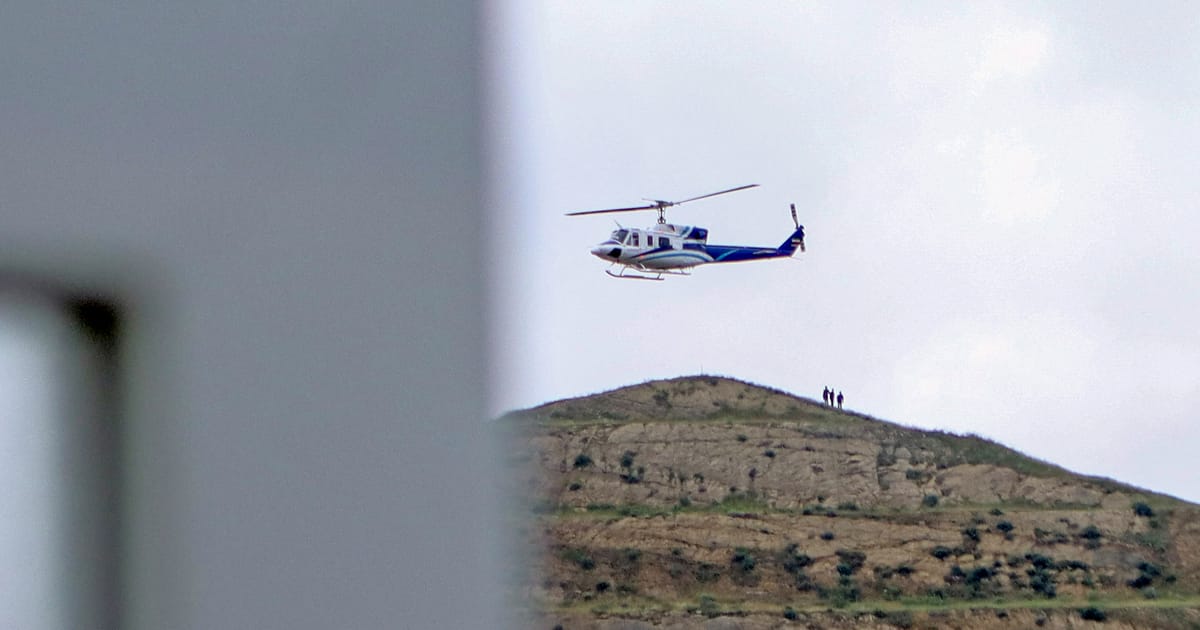Iranian President Ebrahim Raisi — often seen as a potential successor to Supreme Leader Ayatollah Ali Khamenei— is missing after his helicopter went down in the northwest of the country on Sunday, officials said.
Iran’s Vice President Mohsen Mansouri said contact has been made with one of the helicopter passengers and one of the flight crew, although the connection had frequently been interrupted.
A report by official Iranian news agency IRNA says that it seems the incident was not serious, but does not provide an update on Raisi’s wellbeing or that of any other passengers. Iran’s Foreign Minister Hossein Amir-Abdollahian was also reportedly on board the aircraft.
Update (NYT):
The head of Iran’s Red Crescent Society, Pirhossein Kolivand, told state TV that search and rescue teams have not located the site of the helicopter crash after more than 10 hours of looking, and have made no contact with anyone on board. Any rumors to the contrary were false, he said. Kolivand said rescuers were using their best guesses to set the search area and had no confirmation of the exact location of the missing helicopter.
Update 2 (BBC)
President Ebrahim Raisi, Foreign Minister Hossein Amir-Abdollahian and several others are confirmed to have been killed in Sunday’s helicopter crash in north-western Iran, state TV says.



Helicopters are 100% death traps. They are very sensitive to up/down drafts often found in mountain terrain. They have no ability to glide like a plane in the event of an engine failure. If they’re not pressurized/o2 equipped they have a maximum altitude which quickly becomes an issue when you are already in the thin air of a mountain.
Totally. We’ve had our fair share of accidents involving helicopters in my city for instance…
This is actually not true: https://www.popularmechanics.com/flight/a20559/how-helicopters-land-safely-engine-cuts-out/
It is technically true, though. Autorotation only provides some control while going down (and the adds inertia helps, too,) but generally they won’t be getting back to an airport or something the way an airplane could.
The way it works is they pitch the rotor blades to collect head speed on the rotor and then flair just before the crash, using the rotor’s inertia to make one last bit of thrust. They can use some of the energy for control and to get someplace safe, but they’re usually not trying to go cross country.
Done correctly, in a clear area, they can survive. But a clear area is a lot easier to find for a helicopter than it is for
Usually helicopter crashes are fatal, however. Most crashes are caused by pilots though, for example pilots that elect to fly through cloudy mountains….
My grandfather was a Marine and later a Secret Service agent. He didn’t tell many stories, but one of the few he did was about riding a helicopter down to the ground through autorotation during engine-out testing – this was apparently while they were qualifying the original Marine One for Eisenhower’s use.
Helicopters are sometimes rightly derided as “a collection of spare parts flying in loose formation” but in this case it seems like they were spitting in the face of God and daring him to do something about it – flying into dangerous terrain, in inclement weather, in what very likely was an old and ill-maintained aircraft. That’s a lot of bad choices to make at once.
I always heard “10,000 parts and an oil leak trying to get away from eachother”.
Or “a helicopter does not fly so much as beat the air into submission”.
If it ain’t leaking that means it’s empty, etc…
Wow, I would have never guessed helicopters could do that. Very interesting read + video!